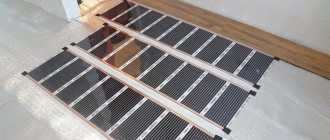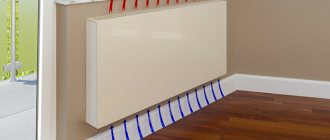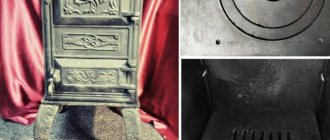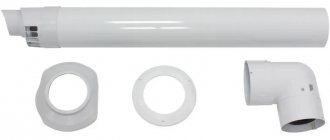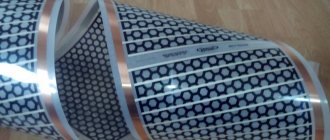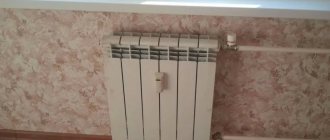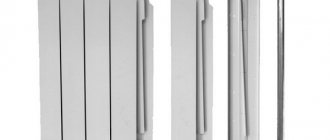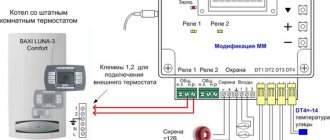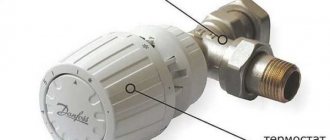The operating principle of infrared heating devices is so simple that one can only wonder why this heating method has become widespread only now. Plus, it is energy efficient and economical. However, many still do not know what infrared heating panels are or what the principle of their operation is.
You will learn everything about the types of IR panels, the specifics of their operation and advantages and disadvantages from the article we presented. We have described in detail the features of their installation and operation. Arguments were given to convince people to purchase infrared heating equipment for decorating their own home.
Operating principle of infrared devices
Heating a room with infrared radiation is a revolutionary method that treats not so much the air itself as the objects in the room. The IR source acts on space like the Sun on our planet.
All other heating methods (batteries, oil heaters, etc.) work on the principle of convection heating of air masses. That is, cold (unheated) air flows around a hot surface and receives heat from it. An increase in temperature entails a decrease in density, as a result, according to the law of physics, air rushes upward.
But we don't live on the ceiling. It is important for us that the comfortable air temperature is in the central and lower third of the room.
There is nothing complicated about the design of IR panels - it’s surprising how humanity didn’t think about their invention earlier! The infrared heat emitted by heaters is similar in power and structure to solar rays
A device that heats not the air, but floors, furniture and even your skin, is an infrared panel. Only after heating of these surfaces is heat transferred to the surrounding air. Heating of the room begins from below, thereby ensuring a comfortable temperature in the area of human activity.
And now those people who are at least a little familiar with physics will have a logical question - why are the heat rays of IR panels not immediately absorbed by the air? This is the whole “trick” of these devices!
In the infrared region there are a kind of “black holes” where heat rays are weakly absorbed. The widest such “window” is located in the range of 8-13.5 microns. If thermal radiation has a wavelength close to it, the air throughput in this case is 80-85%, so IR rays reach the surface unhindered.
Optimal installation location for electrical thermal devices
In this regard, personal preference is crucial. There is no consensus on this issue: some people like wall mounting of infrared heating panels, others prefer floor or ceiling mounting. Considering that warm air always rises, installation on walls is not so effective. If you place heating panels on the floor, the air heated with their help will evenly heat the entire room, gradually rising to the ceiling. The operation of ceiling heating panels is approximately the same: in this case, everything depends on the convenience of the location.
Classification of IR heating panels
Depending on the criterion that is taken as the basis for the division, all infrared heating devices are divided into many classes of groups and subgroups.
- According to the method of installation and design, they are divided into:
- Built-in. They are based on plasterboard, on which a heater (graphite thread) and thermal insulation are applied. A decorative protective screen is installed on top of it.
- Mounted. Made of metal, glass, heat-resistant plastic. The heater is encased in anodized aluminum or ceramic.
Built-in models are, as it were, “tied” to building structures or furnishings; wall-mounted types can be used as an independent interior element.
- By type (location) of installation we can distinguish:
- Skirting. They have a long narrow shape, so they are mounted at the bottom of walls (at the border with the floor), under window sills, in niches, etc.
- Wall-mounted. They have a larger heat transfer area than baseboards. They are usually installed in the center of the wall. At the same time, they can be used not only in dry, residential premises, but also in outbuildings - even with high humidity. IR panels are not afraid of moisture and can even be placed in open outdoor gazebos, on verandas, etc.
- Ceiling. They are mounted, as you guessed it, into a suspended ceiling system, and this is their significant advantage. Firstly, they do not spoil the design of the room. Secondly, nothing interferes with the passage of infrared radiation, thus the heat is distributed evenly.
According to the principle of operation, all of the listed types do not differ. They are chosen based on the goals set for the arrangement and the tasks solved during the renovation of the premises.
IR panels built into the suspended ceiling structure are not “conspicuous”, do not take up a centimeter of usable space, and do not affect the interior design
- Based on wavelength they are distinguished:
- Shortwave. It is characterized by heating above 300 ºС, therefore it is usually used at large-scale production facilities.
- Long wave. “Softer” ones provide a comfortable temperature in living spaces without harming the health of others.
Regardless of the type, infrared heating panels must be installed in such a way that the flow of infrared radiation does not encounter obstacles in its path. The best place for installation will be a section of the wall next to which there is no furniture or decorative items.
Classic options
More traditional devices that have been known for several decades are also produced in the form of panels:
- Modular radiator. Structurally, this device is very similar to an analogue of water heating, but is intended for autonomous use. Most often, the device operates on a “dry” principle, that is, steel rod heaters are located inside.
- Panel type convector heater. From a design point of view, this is a fairly simple device, inside of which there is a heat exchanger, and outside there is a convection chamber, which also serves as a protection and forms the overall appearance of the equipment. The operating principle is entirely based on convection. Modern modifications are quite economical and also completely safe; the heating of the body reaches a maximum of 60 degrees, that is, it is impossible to get a burn. It should be remembered that achieving the set temperature in the room using this technique will take 20-30 minutes; you should not count on instantaneous operation.
Scope of application and specifics of operation
IR panels work best with spot heating of a specific place indoors or outdoors. They work great in areas equipped for recreation near dachas and private houses, areas owned by cafes and small restaurants.
Most often, IR panel heaters are used as an additional heating source when it is necessary to increase the temperature in a specific place. For example, when it is necessary to “insulate” a recreation area in a large house or a work space somewhere in a warehouse or industrial facility.
The IR panel allows you to create an “island” of heat in large rooms. Their action is focused, aimed at a certain zone, or more precisely at objects located within it
As for heating commercial buildings in this way, it is very economical and convenient. With the help of panels, it is possible to create conditions for the most comfortable stay of a person in any specific area, without spending money on heating the entire room.
Weather conditions such as humidity or wind do not affect the radiation efficiency, so the panels perform excellently even outdoors.
In offices, infrared panels are often used as the main heat source. This solution is cheaper than installing your own mini-boiler room with solid fuel or gas equipment if the office is not connected to a centralized heating system.
IR heaters are more economical than oil-based heaters, electric heaters, etc., since radiant heating is the most economical among all types of electric heating. It is most profitable for offices to combine heated floors with IR panels mounted in the ceiling. Then you can maintain the room temperature at +20⁰С even in frosty weather.
Infrared heaters emit more than just heat waves. they can easily serve as lamps in the area of entrance areas and in corridors, night lamps
Types of panel heating for home
There are the following types of panel heating.
Water system
The most popular scheme, due to the fact that it successfully combines low price and high efficiency. In urban dwellings, such a panel system is installed by default. In individual houses it is installed only if it is intended for year-round use.
It consists of metal pipes of small diameter located in the thickness of the walls, through which water or other technical liquid is released.
Operating principle: water, heating up in the boiler, moves through pipes that heat the wall, and it heats the air in the room.
- the home heats up in a quarter of an hour;
- cheapness;
- ease of installation of panels.
- Do not use any liquid other than water;
- cools quickly.
The convection process is quite slow, so it is necessary to place the radiator as low as possible, otherwise the floor of the room will be cool.
Electrical panels
Operating principle: the device creates a stream of infrared rays having a certain wavelength. They heat solids, not air . As a result, at a temperature of about 18 °C, a person feels quite comfortable.
Important! All solid bodies in the room, exposed to the rays and heating up, become sources of secondary radiation. Therefore, it seems that warmth surrounds you from all sides.
IR panels are qualified according to their location:
- Ceiling ones are considered the most effective , since in this case the entire area of the room is heated. And they can heat up to 900 °C - these are short-wave devices.
- Wall panels. It is recommended to place them as low as possible - the effect will be greater. Maximum heating up to 400 °C.
- You can know that the device is working within 10 minutes.
- There is no creation of convective air currents, which means dust will not move around the room.
- They do not require routine maintenance or operation monitoring.
- Externally, the panels look very attractive .
- Save space thanks to compact dimensions.
- Wide range of use.
Attention! Among the minuses, it is worth noting the rapid cooling of the room and the rather high energy consumption.
Recently, heaters have begun to be mounted on plasterboard wall cladding. It's much cheaper.
Ceramic from Nikaten
The panel material is natural ceramics, due to its ability to quickly accumulate heat and slowly release it to the environment as it cools.
Monolithic metal structure with a polymer coating, onto which ceramics are hermetically attached. A flexible heat-resistant cable is laid between the body and the ceramic, serving as a heating element. On the front side of the tile, the operating temperature can reach 80 °C, on the back side - up to 90 °C.
Recommendations for installation
To install infrared heating panels, you do not need special knowledge or experience. The tools needed for installation are at the disposal of every owner. The documents for the device must contain step-by-step installation instructions. If you haven’t found it, go to the panel manufacturer’s website, there is definitely such information there.
Fastenings for panels are already included with them. If you have your own vision on this matter, you can choose the fasteners yourself. However, be sure to make sure that it can support the weight of the panel you choose to install.
Here are a few more nuances that it is better to know about in advance, that is, before installation begins:
- A larger percentage of manufactured panels are ceiling panels. Many of them are equipped with corner brackets, but not all. Therefore, pay attention to this point when purchasing. Swivel models are better because their working surface can rotate 30°.
- For rooms with high ceilings, models are produced that are suspended on chains. This allows you to control the radiation intensity and select the heated area.
- To calculate how powerful the heating system should be to warm the room with IR panels, proceed from the calculation - 1 kW per 10 m2.
- Mount the panels at the recommended mounting height, as most lower wattage panels heat the room more efficiently and evenly by eliminating blind spots and hot spots.
During installation, do not allow the heating surface to come into contact with flammable or flammable substances.
Ceiling infrared devices are supplied with a complete mounting kit. The package includes brackets, hooks and chains depending on the model
Take care of high-quality insulation of electrical wiring contacts when installing the device. Use plastic caps or electrical tape for this.
Modern technologies
Economical panel heaters with low energy consumption are presented in several groups.
Carbon infrared models for wall installation
Heating is carried out by an internal carbon-based element. The principle of operation is based on the production of infrared radiation, due to which thermal energy is transferred. To some extent, the effect of convection also takes place; the cold air of the room comes into contact with the heated surface of the device, naturally rises upward, and constant circulation of air masses occurs. The mass of these devices is small, which simplifies installation.
An additional feature is that during operation, anions are generated, that is, negatively charged particles that improve the microclimate of the room and promote effective dust deposition.
The outer plane of the device reaches a maximum temperature of 80 degrees, that is, dust and oxygen are not burned, but you can get a burn if handled carelessly. If there are children at home, installation is carried out taking this feature into account. Modern modifications of this equipment are complemented by temperature regulators, thanks to which microclimate settings are adjusted and energy consumption is reduced. However, you can only see them on high-power devices, from a kilowatt.
Ceramic panel
Inside this device there is a ceramic heating plate, thanks to which an even distribution of thermal energy is achieved without significant heating of the surface. The peculiarity of the model is its significant thermal inertia, however, heating of the room is achieved in a fairly short time. The heat from these panels is quite soft, creating a pleasant microclimate. Some disadvantage lies in the heavy weight, which complicates installation.
Quartz panel
The base of the body is made of quartz sand, and inside there are several metal spirals. First, the contents of the panel heat up directly, it begins to accumulate heat and transfer it to the room. This feature explains the significant thermal inertia of the device; full heating occurs only after 25 minutes. However, this same feature explains that the panel will cool down gradually, and even when turned off, it will be able to heat the room.
Unfortunately, this is not the best option if there are small children in the family, because the surface heats up to 95 degrees, so you will either have to install it at an inaccessible height, or take care of a protective screen.
The increase in indoor air temperature is achieved mainly through convection, but infrared radiation also occurs. In fact, this device can be classified as an electric convector, but improvement with quartz sand has made it possible to increase inertia and reduce the surface temperature, so that dust and oxygen are not burned.
Heating patterns
The most unusual appliances for the home. In fact, they are devices with carbon elements, but the outer surface is decorated with a drawing or photograph, so they look not like utilitarian devices, but like paintings.
Arguments for and against IR panels
Those who plan to install infrared heating panels at home naturally want to know not only about their advantages, but also about the points that may cause inconvenience. Therefore, below is an objective assessment of both the positive aspects and disadvantages of this heating method.
The following arguments in favor can be given in favor of infrared panels:
- Impact resistance and increased strength. IR panels are not afraid of even shocks and falls. And all thanks to its shockproof body and heavy-duty materials.
- Easy installation and simple operation. You just need to fix the panel on the wall or ceiling and plug it into a power outlet. This does not require any special knowledge, a welding machine, etc.
- Low energy consumption. Firstly, there are no energy losses for heating the air. Secondly, IR radiation reduces the overall temperature of the space by 3-5 ºС, which allows saving energy up to 25%. That is, the air temperature is felt on average 5 degrees higher than the one shown by the thermometer when measured. And all because not only the air that is being measured heats up, but also the objects in the room and even the person himself.
- Quiet operation. Such heaters will not “crack” or “gurgle”, which means they will not interfere with sleep and other vital processes.
- Independence from power surges. Even if the voltage changes, this will not affect the operation of the heater.
- Maintaining normal air humidity. IR thermal panels do not dry out the air, like other electric convectors, which make breathing difficult and dry out the mucous membranes. They do not allow air mixing (cold/warm), so dust caused by heated air masses does not rise.
- Compact dimensions and lack of associated equipment. There is no need to install bulky pipelines, radiators, boilers.
However, quite often on the Internet you can find information about the dangers of infrared radiation and the negative effects it has on the human body. Such myths have no scientific basis.
Radiant heating benefits from the fact that it evenly warms the room without creating zones of “stagnation” of warm masses
On the contrary, in this sense they are “more useful” than other common heating methods, because:
- do not dry out the air or burn out the air;
- do not raise dust, since there is no convection;
- keep the body in good shape due to the slight temperature contrast.
In addition, such heaters are even recommended for people suffering from joint diseases, since they warm up the human body well, as a result of which inflammation and pain soon go away.
When long-wave infrared rays hit the skin, its receptors are irritated, to which the hypothalamus reacts, the smooth muscles of the blood vessels relax, as a result of which they expand.
Thus, IR rays help stimulate and improve blood circulation. Please note that they are completely harmless to the skin, unlike UV rays, which can even cause pigmentation changes. If you approach the use of IR radiation rationally, it will be difficult to find shortcomings.
Infrared heating panels are not harmful to health. On the contrary, they help cure joint diseases, and it’s not for nothing that they are used in medicine
In cases of poor quality maintenance and negligent use of devices, the following not very pleasant consequences are possible:
- If installed incorrectly, the space will warm up in a different area that would need to be treated first. Infrared radiation is characterized by a clearly limited segment of action.
- An infrared heating system does not always fit harmoniously into the surrounding space.
- Excessive radiation can negatively affect electronics (TV, computer and other electrical appliances). However, it all depends on whether operating standards are met and what dimensions the room has.
Infrared panels are a new generation heating system. It provides safe and efficient home heating with minimal financial costs. You will not encounter any significant drawbacks when installing or using the panels, since they simply do not exist.
Conclusion
A heating system based on infrared thermal panels is the optimal solution for all types of health centers. This is the additional value that can be offered to the customer, lower installation and heating costs, better and healthier well-being. Long infrared waves help improve the circulatory system, strengthen the immune system, have a positive effect on rheumatoid arthritis, increase the stretch of collagen tissue, reduce joint stiffness and reduce muscle spasms.
“Question-answer” section
On the topic of infrared panels, you can find a lot of identical questions on the Internet, which are the first thing that comes to a person who decides to install them at home. We have consolidated the most common of them and prepared a kind of TOP questionnaire with detailed answers.
— How long will IR panels last me?
— Their average service life is 25 years. Whether they will work for you more or less depends on the mode in which you operate them and whether you follow the care rules.
— What is sold complete with the IR panel? Are any other materials or components needed for its installation and operation?
— The standard configuration of the device includes the heater itself and a wire with a plug. For subsequent installation and connection, you also need electrical wires, a thermostat in the socket, if it is not structurally provided for, automatic switches, magnetic starters and possibly other automatic devices (depending on the characteristics of the heating system).
You will also need brackets, dowels, screws, and self-tapping screws for fastening, but in most cases they also come as a kit.
— Do panels from different manufacturers have different dimensions or are the standardized dimensions the same for all?
— The length may differ - 1 m and 1.5 m. The first is on models with a power of 0.6 kW, the second is for 1 and 1.3 kW. The width and thickness are the same for all devices - 16.5 cm and 4 cm, respectively.
— What acts as a heating element in the panel?
— It is a low-temperature heating element mounted in an aluminum plate, which acts as a radiator.
— How much does the ceiling IR panel weigh?
— It all depends on the power of the model. For configurations at 0.6 kW, the weight is 3.5 kg, for power 1 and 1.3 kW - 4.5 kg.
— My ceiling is covered with plastic. Will the panel light it up? Does it get very hot?
— Its body practically does not heat up, as it is thermally insulated. Therefore, installation is possible on surfaces made of any materials. You don't have to be afraid of fire.
Infrared heating devices can be mounted on any surface. They work well with any building and finishing materials without the risk of fire
— Is it possible to leave the plates turned on unattended?
— Yes, if they are equipped with a thermostat. If not, it is not recommended to leave it unattended for a long time to avoid overheating of the room.
— How many thermostats do you need?
— One thermostat per room.
— How much electricity is consumed with such heating? If a model with a power of 1 kW will it “wind up” 1 kW/hour?
— If you approach operation wisely, then, of course, no. The whole secret is that to maintain a comfortable temperature, it is enough for the panel to work for 20-30 minutes per hour.
It is not necessary to monitor the operation of an infrared heating panel equipped with a built-in thermostat or similar device in the outlet. It will turn off automatically when it reaches the temperature selected by the owner.
If you install a thermostat, the heater will not work constantly. It will turn on as needed. If the heating operates for 20-30 minutes per hour, electricity consumption will be from 1/3 to 1/2 of the device’s power.
Advantages over conventional heaters
One of the main advantages due to which many housewives look at these warming wall paintings and panels is their appearance and the ability to further decorate the interior of the apartment.
A single apartment owner can also choose the model he likes.
In addition to using them at home, they can also be used at work by hanging the picture directly near the workplace. In many offices, the use of fan heaters or heat blowers is officially prohibited due to their fire hazard.
But with such a heater there are no problems.
Forgot to install a heated floor or a separate radiator on your balcony or loggia?
And here this wonderful infrared device will help you out. Moreover, such warming paintings can be hung on walls made of any material.
The heating temperature of the surface of the film wall heater does not exceed 65-75 degrees. Therefore, it is simply impossible to get burned by accidental contact here.
Because of this, many people use them in children's rooms. For example, the most common oil radiators, which seem to be reliably protected on all sides and do not have open heating elements, are highly not recommended for use in children's rooms.

